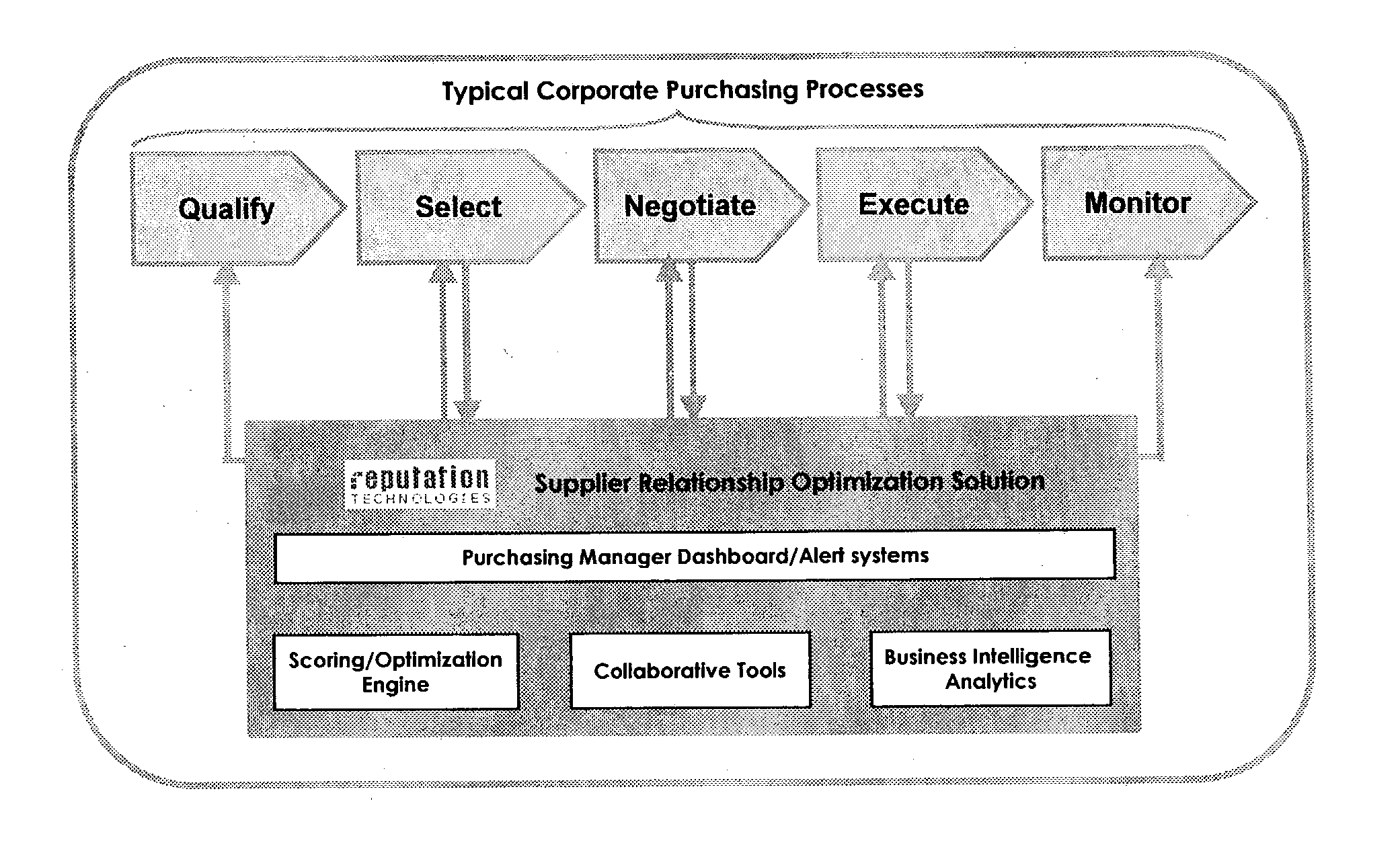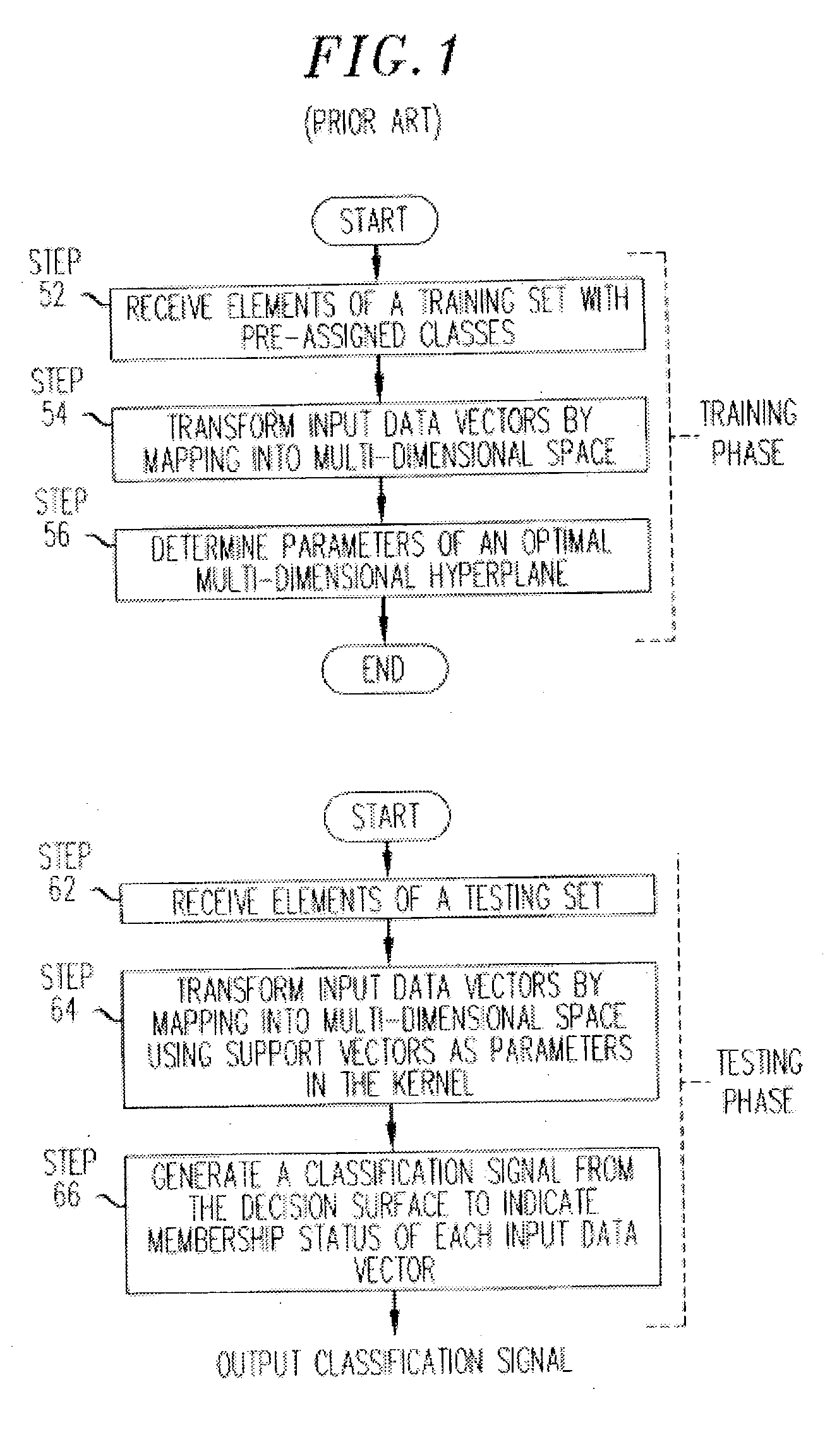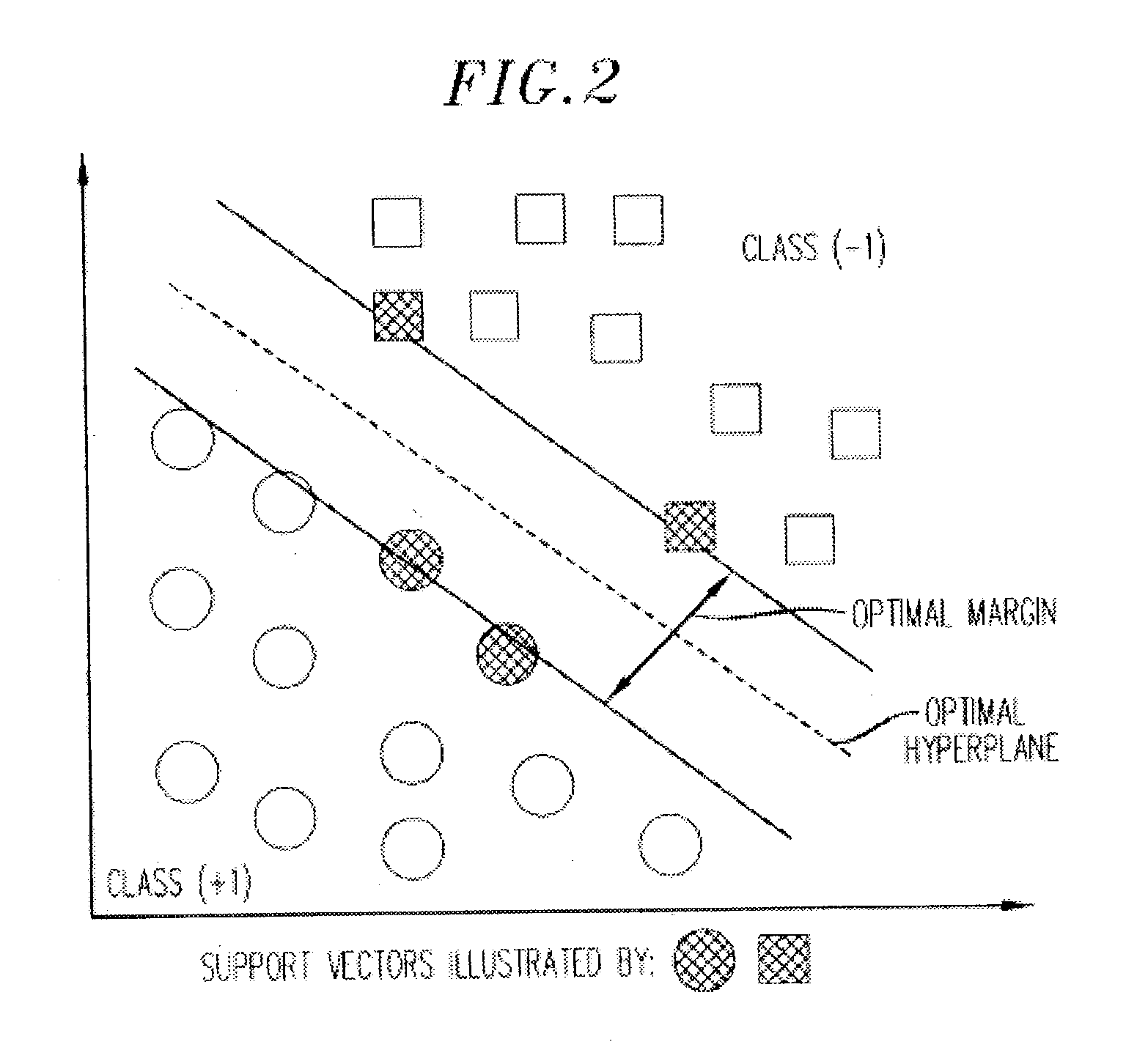Support vector machines for prediction and classification in supply chain management and other applications
- Summary
- Abstract
- Description
- Claims
- Application Information
AI Technical Summary
Benefits of technology
Problems solved by technology
Method used
Image
Examples
Embodiment Construction
[0038] The present invention includes novel implementations of SVMs and systems incorporating such SVMs to enable prediction, classification and other useful results from non-uniform, "partial" or otherwise incomplete data. Although SVMs as a class of trainable learning machines are known to those skilled in the art, SVM theory and operation are next discussed for the convenience of the reader, and to highlight the differences between the present invention and conventional SVMs.
[0039] Prior Art SVMs
[0040] Examples of Prior Art SVMs: Examples of SVMs are set forth in the following publications incorporated herein by reference:
[0041] U.S. Pat. No. 6,327,581, Microsoft Corporation (methods for building SVM classifier, solving quadratic programming problems involved in training SVMs);
[0042] U.S. Pat. No. 6,157,921, Barnhill Technologies, LLC (pre-processing of training data for SVMs, including adding dimensionality to each training data point by adding one or more new coordinates to the...
PUM
 Login to View More
Login to View More Abstract
Description
Claims
Application Information
 Login to View More
Login to View More - R&D
- Intellectual Property
- Life Sciences
- Materials
- Tech Scout
- Unparalleled Data Quality
- Higher Quality Content
- 60% Fewer Hallucinations
Browse by: Latest US Patents, China's latest patents, Technical Efficacy Thesaurus, Application Domain, Technology Topic, Popular Technical Reports.
© 2025 PatSnap. All rights reserved.Legal|Privacy policy|Modern Slavery Act Transparency Statement|Sitemap|About US| Contact US: help@patsnap.com



